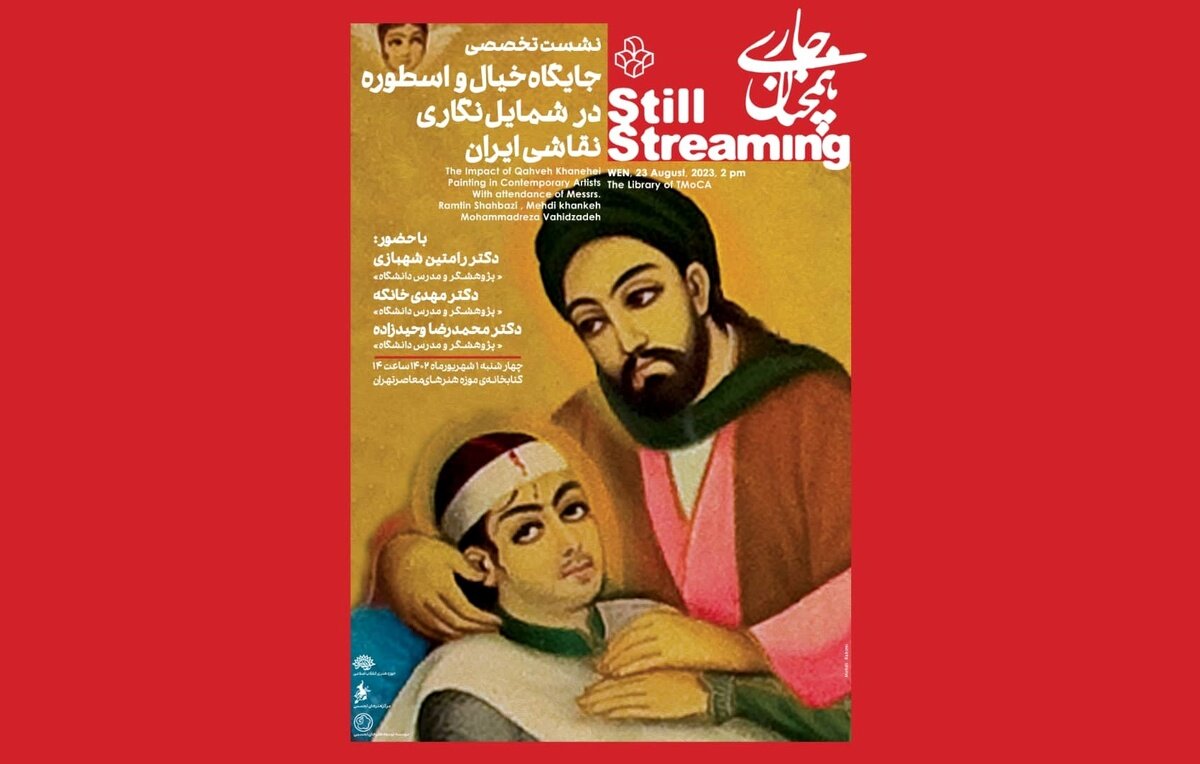Tehran session to explore role of mythology in Ghahve-Khaneh paintings

TEHRAN – The Museum of Contemporary Art in Tehran will be hosting a session on Thursday to review the role of imagination and mythology in the visual representation of Ghahve-Khaneh paintings (a folk-narrative style of Iranian painting mostly seen in coffee houses).
This session is part of the specialized sessions series of the exhibition "Still Ongoing," which reviews the reflection of the Ashura movement in contemporary visual arts.
Art scholars and researchers Ramtin Shahbazi, Mehdi Khanekeh, and Mohammadreza Vahidzadeh are scheduled to attend the session.
These weekly specialized sessions are open to all interested artists and art enthusiasts and will continue until the end of the "Still Ongoing" exhibition, which is underway at the museum until September 22.
Ghahve-Khaneh paintings are a unique form of Iranian folk-narrative painting that emerged in the 19th century. The term "Ghahve-Khaneh" translates to "coffee house" in Persian, as these paintings were predominantly displayed in traditional Iranian coffee houses.
Ghahve-Khaneh paintings are characterized by their vibrant colors, intricate details, and narrative storytelling. They often depict scenes from Iranian folklore, epic tales, historical events, and everyday life. These paintings were primarily created by itinerant artists who traveled from one coffee house to another, displaying their artworks to entertain and engage the patrons.
One distinct feature of Ghahve-Khaneh paintings is their narrative structure. The artists used a sequential storytelling approach, presenting a series of interconnected scenes within a single painting. This technique allowed viewers to follow the story from one scene to another, creating a sense of visual storytelling akin to a comic strip or a storyboard.
The subject matter of Ghahve-Khaneh paintings is diverse and reflects the cultural, social, and historical contexts of Iran. It encompasses a wide range of themes, including love stories, mythological legends, religious narratives, historical events, and social commentaries. These paintings often highlight traditional Iranian values, customs, and beliefs, serving as a visual representation of the collective memory and cultural identity of the Iranian people.
In terms of artistic style, Ghahve-Khaneh paintings combine elements of traditional Persian miniature painting, popular art, and storytelling traditions. The artists employed intricate detailing, rich color palettes, and stylized figures to create visually captivating compositions. The use of bold lines, exaggerated proportions, and expressive gestures adds a dynamic and lively quality to the paintings.
Ghahve-Khaneh paintings not only served as a form of entertainment but also provided a medium for social and political commentary. The artists often incorporated subtle satirical elements and allegorical symbolism to critique societal norms, political events, and the power dynamics of the time. These paintings acted as a means of communication, reflecting the aspirations, concerns, and aspirations of the Iranian people.
While Ghahve-Khaneh paintings were primarily displayed in coffee houses, they have gained recognition as an important part of Iranian cultural heritage. Today, they are appreciated as unique examples of folk art and serve as a visual window into the traditions, stories, and artistic expressions of the past. Efforts have been made to preserve and promote Ghahve-Khaneh paintings, ensuring their continued appreciation and understanding for future generations.
SAB/
Leave a Comment